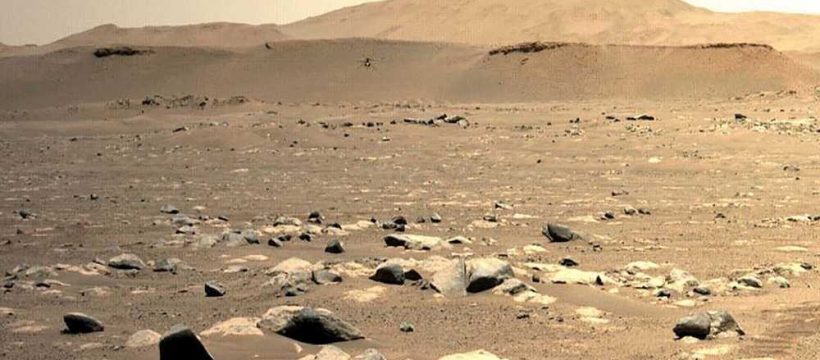More On:
mars
Elon Musk says ‘bunch of people will probably die’ during Mars mission
China invokes mythic god of war and fire for its Mars rover name
Mars Ingenuity helicopter makes even riskier flight over red planet
NASA extracts breathable oxygen from thin Martian air
NASA’s history-making helicopter Ingenuity made its fastest and farthest flight on Mars ever on Sunday.
The four-pound space chopper— which last week became the first controlled aircraft ever to fly on another planet — achieved its groundbreaking third flight at 4.5 mph, roughly four times faster than its previous two journeys, according to NASA.
The cosmically cool gadget also zoomed 330 feet for about 80 seconds, its longest time and distance recorded yet.
“Today’s flight was what we planned for, and yet it was nothing short of amazing,” said Dave Lavery, the project’s program executive, said in a statement. “With this flight, we are demonstrating critical capabilities that will enable the addition of an aerial dimension to future Mars missions.”
During the helicopter’s previous two journeys on the Red Planet, it traveled no faster than 1.1 mph and no farther than 12 feet, according to NASA. It also soared about 16 feet above the surface of Mars, roughly the same altitude as previous flights.
“Consider that we never moved laterally more than about two-pencil lengths when we flight-tested in the vacuum chamber here on Earth,” Ingenuity Mars helicopter chief pilot, Håvard Grip, wrote in an update. “As such, Flight Three is a big step, one in which Ingenuity will begin to experience freedom in the sky.”
The Perseverance rover, which aids communication between the helicopter and its mission team on Earth, captured footage of the third flight. The 80-second video is expected to be beamed to Earth in the coming days.
“Today’s flight was what we planned for, and yet it was nothing short of amazing,” said Dave Lavery, the project’s program executive, in a statement. “With this flight, we are demonstrating critical capabilities that will enable the addition of an aerial dimension to future Mars missions.”
Share this article:
Source: Read Full Article
